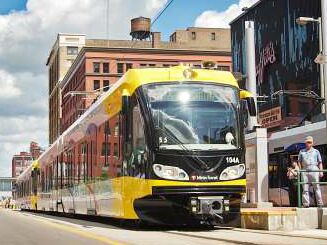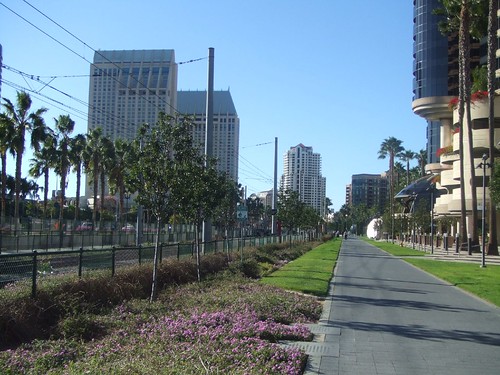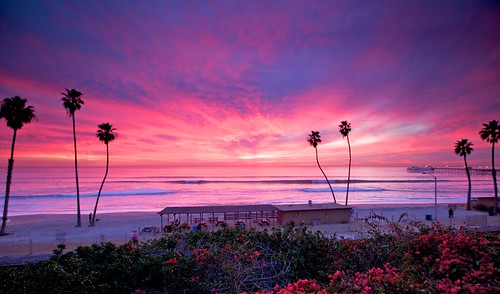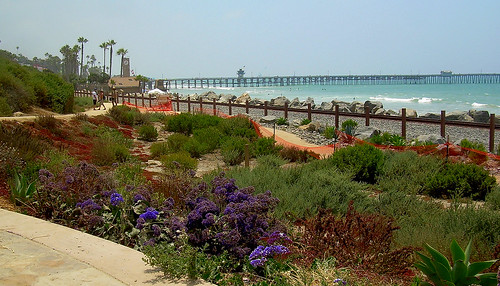This is about rails WITH trails....
You're probably familiar with rails TO trails - building paths and trails along abandoned rail corridors. This is about building trails, paths and bikeways along active rail corridors.
"Could this be safe?" you ask. It is, indeed. Rails-with-trails (RWTs) have been around since the eighties and there hasn't been a single fatality and only a couple of minor accidents reported back in the nineties (O.K - there was a cow that broke through a fence and took the fast ride to a butcher shop on the front of a locomotive and there was the one knuckle-head who rode his bike under a closed crossing gate. Don't worry - he wasn't killed - and his case was thrown out of court. I hear he may have been nominated for a Darwin Award...)
Kidding aside, studies show RWTs actually make the railroad corridors safer; people don't walk on railroad tracks when there's a nice, smooth path 20 feet away and they cross the tracks where they're supposed to at designated crossings. 716 cyclists died on our roads in 2008. I can tell you from experience, the railroads will jump up and down and declare the sky is falling, but any reasonable person will draw the proper conclusion from the facts.
Are you still not convinced that riding on a rail-with-trail is for you? Contemplate this: would you rather ride your bike 15 feet from a train doing 30 mph on a pair of steel tracks, or choose to ride on a curvy, two lane road, 24 inches away from a tractor trailer doing 60 mph, while the driver is texting home to find out when the pork roast will be served. Case closed.
Why should the railroads do rails-with-trails? For one reason: we, as taxpayers, deserve it.
The federal government is giving the railroads $8 billion to upgrade passenger rail corridors. They're scheduled to spend billions more on upgrades over the next five years. That's your money and mine. And that doesn't even include bushel-baskets more money to upgrade the freight lines.
Railroad corridors are typically owned by private rail companies. We upgrade their corridors, they ship more products and more people. They make more profits. We, the taxpayer, foot the bill to rebuild their tracks. What's missing here?
Shouldn't we share the benefits with safe, direct paths to go to work, get some exercise, ride to school or go to the store? Seems like a reasonable request.
Why use rail corridors for paths? Frequently, these railways were laid out over a hundred years ago. They typically followed the most direct path - the paths of least resistance, like valleys, river courses and streams to get from Village A to City B or Port C. The railways were flat, straight and and they connected towns, villages and cities. Many of these paths are now surrounded by exurbs, suburbs and cities full of car drivers who follow those same basic routes to the center cities a century later. As an added benefit, some of these railways follow incredibly scenic routes through the country side to those cities.
In many instances, large swaths of land were taken from landowners years ago, whether the farmer wanted the railroad or not. Eminent Domain ruled and frequently these corridors were cut wide, reserving land on either side of the tracks for future use. Perhaps it's now time to put that land to good use.
Fast forward 125 years.
The days of cheap, plentiful, gasoline came, everyone bought a car (or two or three) and trolley cars, buses and mass transit in most city has nearly gone the way of the DoDo bird. And so, too, may have the days of cheap, endless gas.
We need to start planning for tomorrows transportation needs. It won't come as a surprise to many that walking and biking will become more familiar to most Americans. (Considering that most American adults are overweight (68% according to the LA Times) maybe that's not such a bad thing.
Congress has finally figured out that upgrading our rail infrastructure - freight, passenger and high-speed - is a smart idea. We agree. We're simply saying that while we're upgrading our rail infrastructure, let's do things right and include multi-modal accommodations while we're doing it - bike and pedestrian paths - and make the most of the opportunity.
More cars and more highways are no longer the answer. Let's round out our transportation system at once. Let's build rails-with-trails and create a transportation system for 21st century and beyond.
We hope you support the idea and choose to come along for the ride......
Please sign our RWT petition @ http://www.ipetitions.com/petition/rwt/







